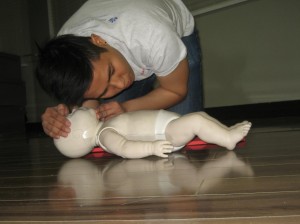American CPR courses are available all throughout the US, being offered by training providers in different states. CPR courses are very popular because they teach trainees important life-saving skills for people who suddenly experience a cardiovascular incident. There are many CPR programs to choose from, from basic CPR for the general public to advanced life support programs for healthcare professionals. All of these programs are offered in our 6 providers throughout the country. You can visit the provider nearest you to get started on CPR training. Because all our programs are certification classes, students who sign up and pass a program are awarded a CPR training credential.
Credentials and renewal

CPR training certificates are awarded to a trainee once he or she has passed the post-tests given after all the lessons have been given. Post-tests are usually a practical test and a written exam. The credential can either be a wall-mount certificate or a wallet-sized completion card. Both have a validity of two years. Before the expiration of the credential, rescuers can renew them through a re-certification class. Not all of the programs have re-certification classes, so student will have to retake the program to get a new credential.
Basic Life Support
Basic Life Support covers standard cardiopulmonary resuscitative skills taught to the public as well as healthcare providers. BLS was first introduced by the American Heart Association to serve as a set of guidelines to follow in giving CPR. There are three kinds of BLS programs:
- Basic CPR for the general public – This is a 4 hour program tailored for the public. It teaches basic skills such as compressions and rescue breaths. The use of automated external defibrillators (AEDs) is taught to trainees as well. AEDs are used to supply the heart with electrical shock to return it to a normal rhythm. A few first aid skills are also included in the program. Because this a general public program, the skills test at the end of the program is optional. No re-certification availalble.
- Basic CPR for healthcare providers (HCPs) – The curriculum for this program is tailored for healthcare providers – people who work in a healthcare setting, not necessarily healthcare professionals. AED training and basic first aid is also included in this 4.5 hour course. Students are required to take the skills test and written exam to get certified. No re-certification available.
- BLS for HCPs – This program is also 4.5 hours long but focuses on the BLS guidelines from the American Heart Association. The guidelines highlight the links in the “Chain of Survival”, steps in giving cardiopulmonary resuscitation. To qualify for this program, students need to pass a pre-test – a practical and a written exam. Post-tests are also given to students in order to receive CPR training credentials. Re-certification is 4 hours.
Chain of Survival
There are five links in the Chain of Survival. Starting at recognition that cardiac arrest has occurred and ending at post-cardiac arrest care.
- Recognition of CA (cardiac arrest)
- Immediate CPR – 30 chest compressions followed by 2 rescue breaths per cycle
- Defibrillation
- Advanced Life Support
- Post-cardiac arrest care